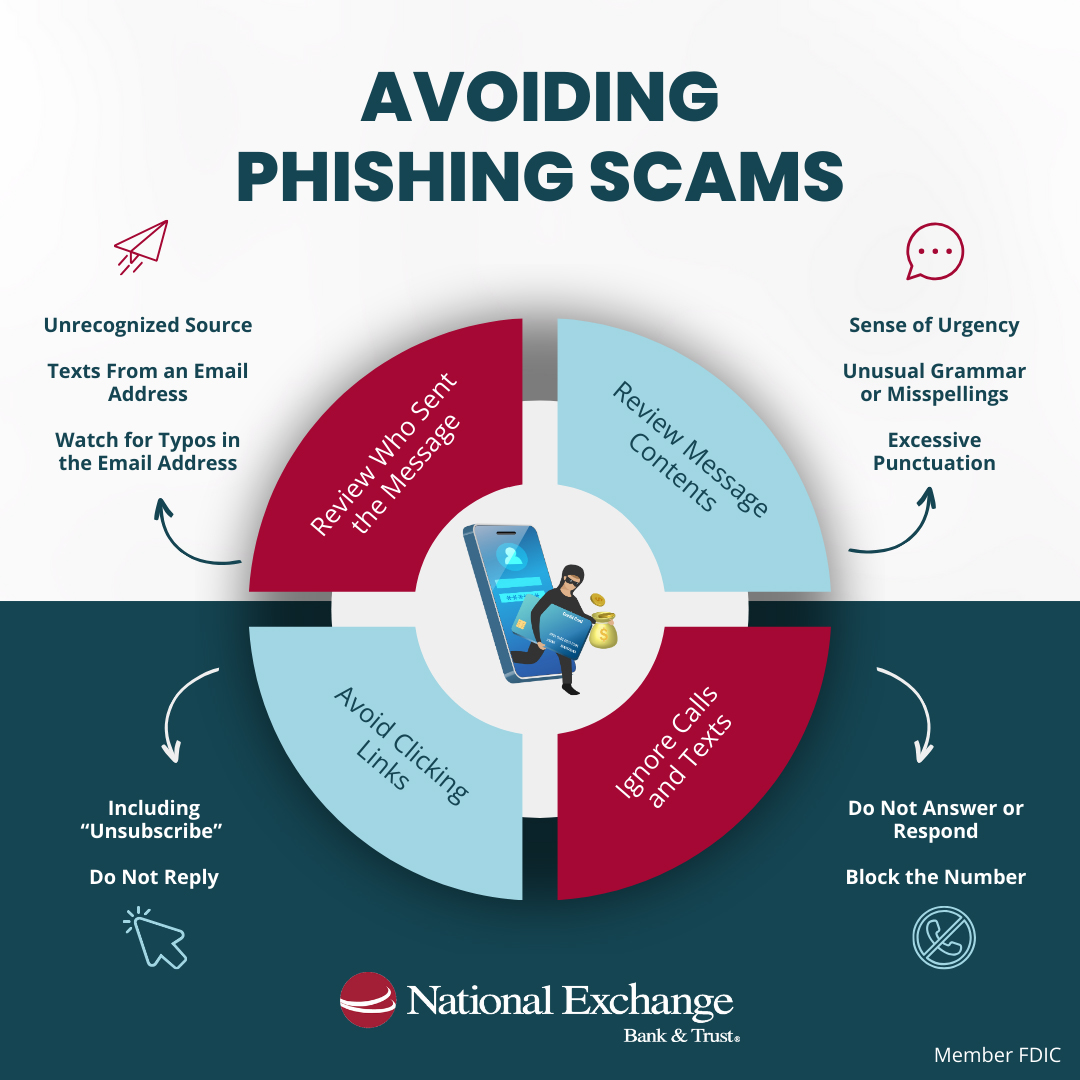Cybersecurity Tips
| Posted in News, Security & Fraud
You’re enjoying your Saturday morning coffee and scrolling social media when you see a new email notification from your bank. You open the email to see there has been suspicious activity on your account. In a panic, you click the link in the email to try and quickly rectify the situation and are met with a fake website requesting your information. You realize you’ve been hacked, but it’s too late.
Unfortunately, fraud attempts like these happen often and are getting harder to detect. Although technology and software manufacturers do everything they can to keep you protected, there are several steps you can take to mitigate the risks and stay safe online.
In honor of Cybersecurity Awareness Month, NEBAT has put together a list of cybersecurity tips and ways for you to avoid phishing scams. No single step is foolproof but used together they will give you a better chance at keeping your personal assets safe, as well as your employer’s, especially if you’re a remote employee.
Account and Password Management
- Enable Multi-Factor Authentication (MFA): Whenever possible, use a form of multi-factor authentication to secure your accounts. This can be in the form of a text, email, or authenticator app with a code to verify your login. Using MFA makes it difficult for password cracking tools to allow break-ins.
- Create Complex Passwords: Long, complex and unique passwords are always recommended. Be sure to have at least one lower case letter, upper case letter, number and special character in your passwords.
- Check Privacy Settings: Understand the privacy settings on your accounts and update accordingly based on your preferences. Many times, companies will update these options to help keep you safe, so check back frequently.
Technology and Software
- Keep Software Updated: Outdated software is another common place where cyber-attacks happen. We know software updates can interrupt your day, but updated software also offers increased security. You can set many phones and computers to auto-update at times that are convenient for you.
- Be Cautious with Any Downloads: Before downloading anything to your computer or phone, do your research to ensure its authenticity.
- Review Access Preferences: Know who has access to your files. Verify that documents are shared with the right people and virtual meetings include passwords.
Quick Tips for Avoiding Phishing Scams
Staying safe online includes being aware of potential phishing attacks. Phishing comes in many forms and is sometimes difficult to spot since the phishing attempts often look reputable and appealing. Here are a few tips to recognize phishing scams and help defend yourself from them.
- Review Who the Message is From. Red flags to watch for include text messages from an email address or unrecognized phone number. If an email is from an unrecognized source, including emails that look similar to a credible source, watch for typos and look at the actually email address, not just the sender’s name.
- Review the Message Carefully. Be sure to watch for a sense of urgency such as “act now before we deactivate your account” and unusual formatting of an email or text including poor grammar or misspellings.
- Avoid Clicking Suspicious Links. Look for link previews (hovering over the link text or button) that do not match text.
- Ignore calls from an Unknown Phone Number. An unsuspecting ‘wrong phone number’ call can be a phishing attempt.
- Verify the Source. If the email or phone call seems to be posing as someone you know, reach out to the individual directly for verification. If something “doesn’t feel quite right,” trust your gut.
- Know Forms of Communication. Understand that banks and government agencies do not unexpectedly request personal information over the phone or email.
- Be Careful of the Information You Share. Do not provide personal, confidential information in a communication that you did not initiate.
Utilizing these cybersecurity tips will help weather the fear and hassle of a cyber-attack. NEBAT is here to help protect individuals and businesses alike and stay safe online.

What to do if you Suspect a Phishing Attempt
-
If you’re faced with a cybersecurity challenge that compromises your bank accounts, please notify your bank immediately!
-
If you receive a suspicious email at work, notify your IT department right away to avoid email compromise, or other phishing attempts. Do not click any links or follow any instructions.
-
If you receive an email to your personal account, just delete it and report it as spam. Don’t click any links at all.
-
If you receive any suspicious phone calls or text messages, do not answer or reply, just block the contact.
2024 Cybersecurity Updates
The basics of cybersecurity and phishing threats remain pretty steady year to year, but as mentioned earlier, with advanced technology, comes advanced threats. Here’s a few to be aware of:
- The use of Artificial Intelligence (AI) and Machine Learning (ML): This one is two sides of the coin - AI and ML are helpful when it comes to detecting threats, but are also used for attacks. Check out our full article on this topic.
- Double Extortion: This thread not only takes your stolen data but threatens to use it against you if a ransom is not paid. Contact your local police department immediately if this happens to you.
- Phone Spoofing: With the use of advanced technology, not only will hackers pretend they are calling from your bank, but the phone number will even show as the exact same phone number as your bank.
- Business Email Compromise: Attackers will impersonate high-level executives to trick employees into making purchases, transferring money, or sharing information.
Utilizing these cybersecurity tips will help weather the fear and hassle of a cyber-attack. NEBAT is here to help protect individuals and businesses alike and stay safe online. If you’re faced with a cybersecurity challenge that compromises your accounts, please notify your bank immediately!
